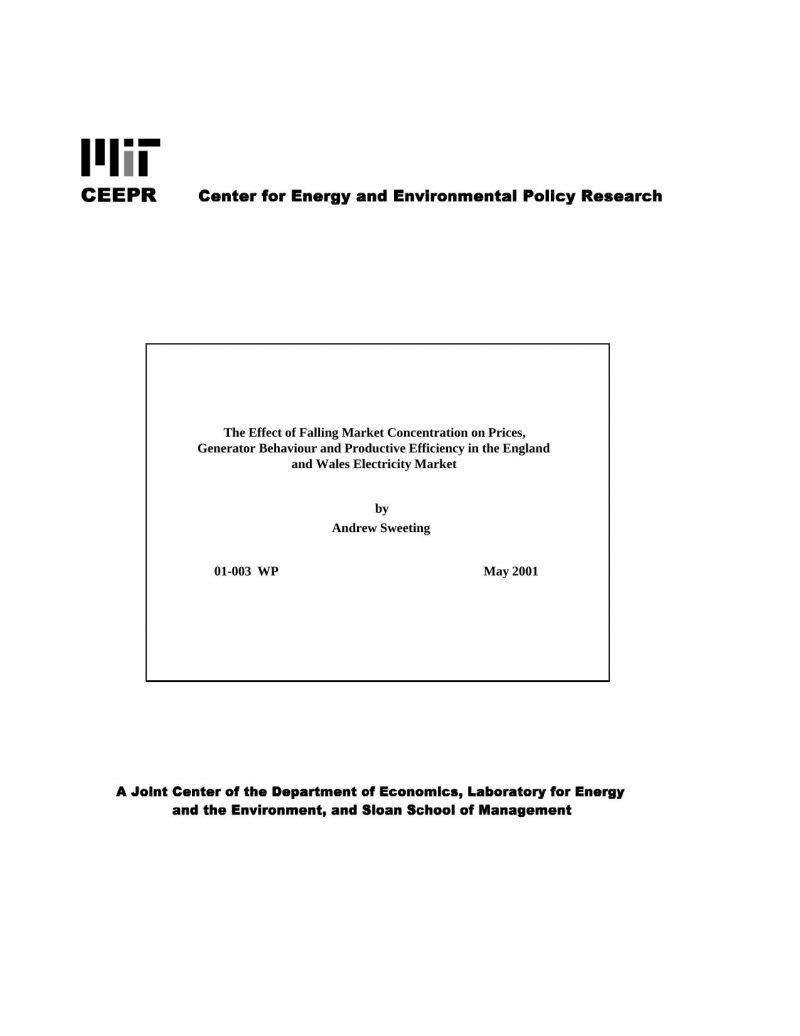The Effect of Falling Market Concentration on Prices, Generator Behaviour and Productive Efficiency in the England and Wales Electricity Market
Andrew Sweeting
01-May
A universal prediction of the various oligopoly models used to predict and explain behaviour in the England and Wales (E&W) electricity wholesale market is that divestiture of plants by the two large incumbent generators and new entry should have led to lower prices and mark-ups. However, even though the market has become significantly less concentrated over the 1990s through both of these mechanisms the regulator (OFGEM, formerly OFFER) has continued to complain about high prices and generator manipulation of prices. This led to OFGEM taking two generators (AES and British Energy) to the Competition Commission in a (failed) attempt to have market abuse conditions inserted in their licenses, and has led to the Pool being replaced by a new set of arrangements (NETA) in Spring 2001. These new arrangements are controversial (see Sweeting (2000) for a discussion), and their success is likely to be partly determined by how much market power the generators still have. This paper gathers evidence on what happened to prices and mark-ups during the last five years of the Pool, which have been studied relatively little compared to the first five years, and also seeks to make several more original contributions.



